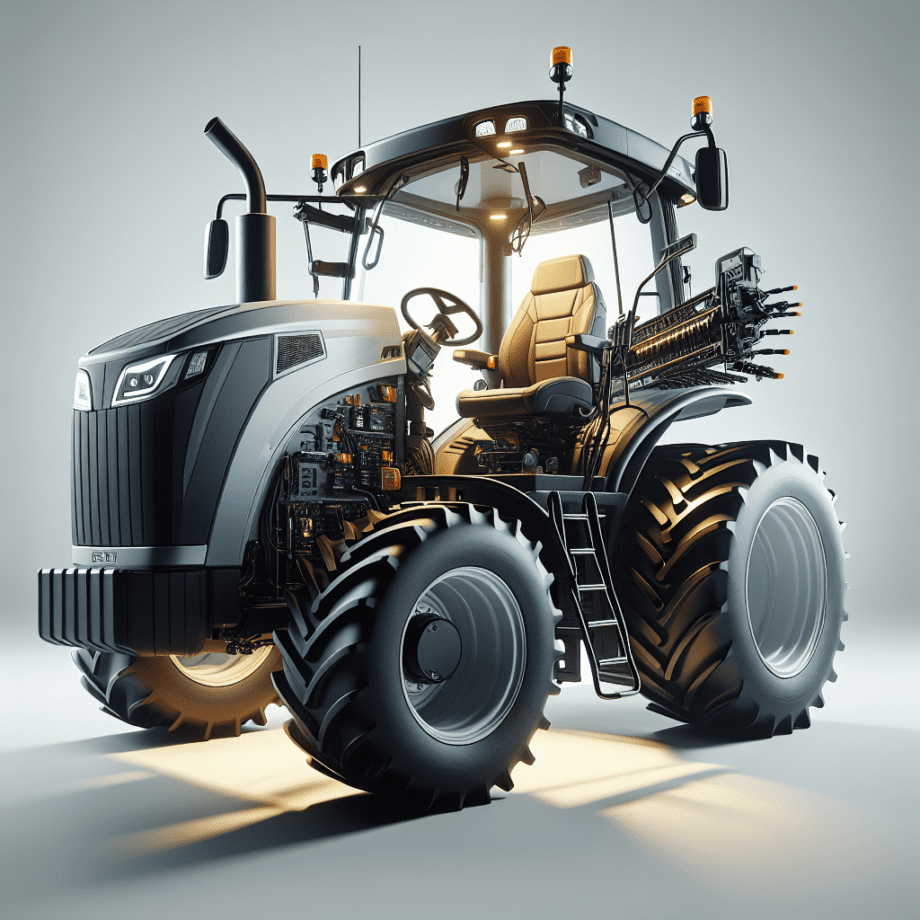Tractor Cab Comfort and Ergonomics: What You Should Know
In the realm of agricultural machinery, the comfort and ergonomics of tractor cabs have become increasingly important. As farmers spend long hours in their tractors, the design and functionality of the cab can significantly impact their productivity and overall well-being. This article delves into the key aspects of tractor cab comfort and ergonomics, providing insights into what modern tractors offer and why these features are essential.
Understanding Tractor Cab Comfort
Comfort in a tractor cab is not just a luxury; it is a necessity for the modern farmer. The long hours spent in the field can take a toll on the body, making it crucial for the cab to provide a comfortable environment. Several factors contribute to the overall comfort of a tractor cab, including seating, climate control, noise reduction, and visibility.
Seating
The seat is arguably the most critical component of a tractor cab when it comes to comfort. Modern tractor seats are designed with ergonomics in mind, offering adjustable features to accommodate different body types and preferences. These seats often come with air suspension systems that absorb shocks and vibrations, reducing the strain on the operator’s back and joints. Additionally, lumbar support and heated seats are becoming standard features, further enhancing comfort during long working hours.
Climate Control
Climate control is another essential aspect of tractor cab comfort. Advanced HVAC (Heating, Ventilation, and Air Conditioning) systems ensure that the cab remains at a comfortable temperature, regardless of the weather conditions outside. This is particularly important in regions with extreme temperatures, where maintaining a stable and comfortable environment can significantly impact the operator’s performance and health.
Noise Reduction
Noise levels inside the cab can also affect the operator’s comfort and concentration. Modern tractors are equipped with soundproofing materials and advanced engineering techniques to minimize noise from the engine and external environment. This not only makes the cab a more pleasant place to work but also helps reduce fatigue and stress, allowing the operator to focus on the task at hand.
Visibility
Good visibility is crucial for safe and efficient operation. Tractor cabs are designed with large windows and strategically placed mirrors to provide a clear view of the surroundings. Some models also feature advanced camera systems and sensors that offer a 360-degree view, further enhancing safety and ease of operation. Improved visibility reduces the risk of accidents and allows the operator to work more efficiently, especially in tight or complex environments.
The Importance of Ergonomics in Tractor Cabs
Ergonomics plays a vital role in the design of tractor cabs, aiming to create a workspace that minimizes physical strain and maximizes efficiency. By focusing on the operator’s interaction with the controls and the overall layout of the cab, manufacturers can create a more user-friendly and productive environment.
Control Layout
The layout of controls within the cab is a key ergonomic consideration. Controls should be easily accessible and logically arranged to minimize the need for awkward movements or excessive reaching. Many modern tractors feature multifunctional control panels and joysticks that consolidate various functions into a single, easy-to-use interface. This not only simplifies operation but also reduces the risk of repetitive strain injuries.
Adjustable Components
Adjustability is another critical aspect of ergonomic design. Components such as the steering wheel, pedals, and armrests should be adjustable to accommodate operators of different sizes and preferences. This customization allows for a more comfortable and natural operating position, reducing fatigue and the risk of musculoskeletal disorders.
Technology Integration
Technology integration is becoming increasingly prevalent in modern tractor cabs, enhancing both comfort and ergonomics. Features such as touchscreen displays, GPS navigation, and automated systems can streamline operations and reduce the physical and mental workload on the operator. For example, automated steering systems can take over repetitive tasks, allowing the operator to focus on more complex aspects of the job.
Health and Safety
Ergonomically designed tractor cabs also contribute to the overall health and safety of the operator. By reducing physical strain and improving comfort, these designs can help prevent long-term health issues such as chronic back pain and repetitive strain injuries. Additionally, features such as air filtration systems can improve air quality within the cab, reducing the risk of respiratory problems caused by dust and other airborne particles.
Conclusion
In conclusion, the comfort and ergonomics of tractor cabs are critical factors that can significantly impact the productivity and well-being of operators. Modern tractors are equipped with a range of features designed to enhance comfort, reduce physical strain, and improve overall efficiency. By understanding the importance of these aspects and investing in well-designed machinery, farmers can create a more productive and sustainable working environment.
As technology continues to advance, we can expect to see even more innovations in tractor cab design, further improving the comfort and ergonomics of these essential agricultural machines. Whether you are a farmer looking to upgrade your equipment or a manufacturer aiming to stay ahead of the competition, keeping abreast of these developments is crucial for success in the ever-evolving field of agriculture.
